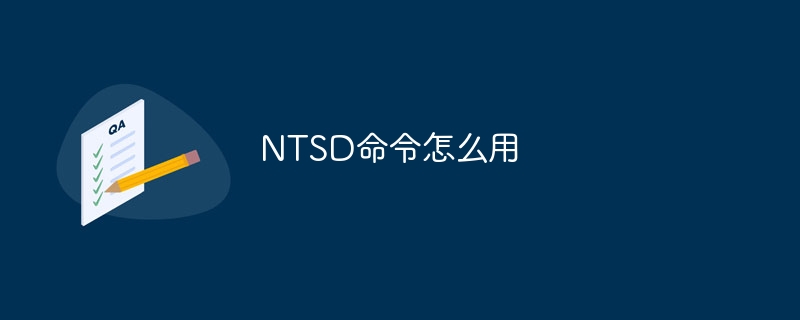How to use NTSD command
NTSD command usage: 1. Open the command prompt; 2. Switch to the directory where the program is located; 3. Start the NTSD debugging session; 4. Execute the debugging command; 5. End the debugging session.

NTSD (Windows NT Symbolic Debugger) is a command-line debugging tool used to debug Windows operating systems. The following is the basic usage of the NTSD command:
Open the command prompt: In the Windows operating system, press the Win key R, enter "cmd", and then press the Enter key. Open a command prompt.
Switch to the directory where the program is located: In the command prompt, use the cd command to switch to the directory where the program to be debugged is located. For example, enter cd C:\Program Files\MyProgram to switch the current directory of the command prompt to the directory where the "MyProgram" program is located.
Start the NTSD debugging session: In the command prompt, enter the ntsd -g -G command to start the NTSD debugging session. Among them, the -g option is used to enable the debugging function of the debugger, and the -G option is used to enable the debugger of the debugger.
-
Execute debugging commands: In the NTSD debugging session, you can enter various debugging commands for debugging. Commonly used debugging commands include:
- g: Continue executing the program.
- p: Start the program and pause at the entry point.
- bp: Set software breakpoints.
- bu: Set hardware breakpoints.
- k: Display the call stack of the current thread.
- !analyze -v: Perform detailed crash analysis.
- r: Display the register value of the current thread.
- d: Display memory contents in the form of instructions.
- dd: Display memory contents in double words.
- t: Single-step into the current thread.
- q: Exit the NTSD debugging session.
End the debugging session: In the NTSD debugging session, enter the q command to exit the NTSD debugging session.
It should be noted that NTSD is a powerful and complex debugging tool, and it requires certain debugging experience and knowledge when using it. In actual use, you can refer to the NTSD help documentation or search for relevant tutorials to learn more commands and usage.
The above is the detailed content of How to use NTSD command. For more information, please follow other related articles on the PHP Chinese website!

Hot AI Tools

Undresser.AI Undress
AI-powered app for creating realistic nude photos

AI Clothes Remover
Online AI tool for removing clothes from photos.

Undress AI Tool
Undress images for free

Clothoff.io
AI clothes remover

Video Face Swap
Swap faces in any video effortlessly with our completely free AI face swap tool!

Hot Article

Hot Tools

Notepad++7.3.1
Easy-to-use and free code editor

SublimeText3 Chinese version
Chinese version, very easy to use

Zend Studio 13.0.1
Powerful PHP integrated development environment

Dreamweaver CS6
Visual web development tools

SublimeText3 Mac version
God-level code editing software (SublimeText3)

Hot Topics
 1660
1660
 14
14
 1416
1416
 52
52
 1310
1310
 25
25
 1260
1260
 29
29
 1233
1233
 24
24


